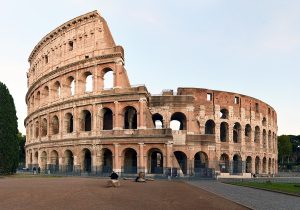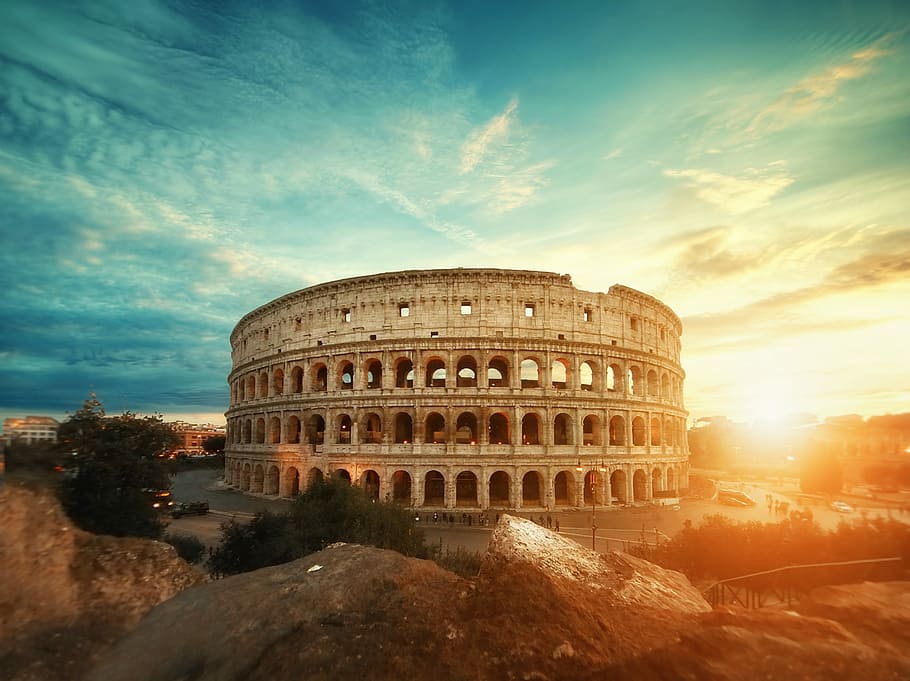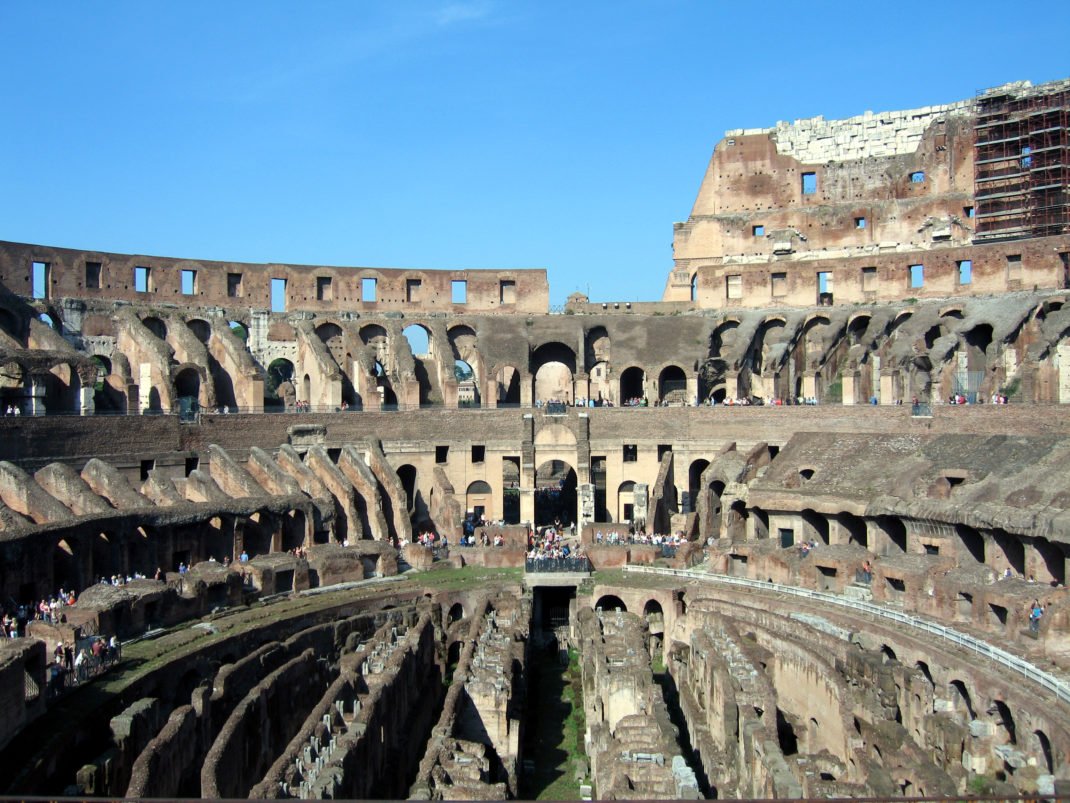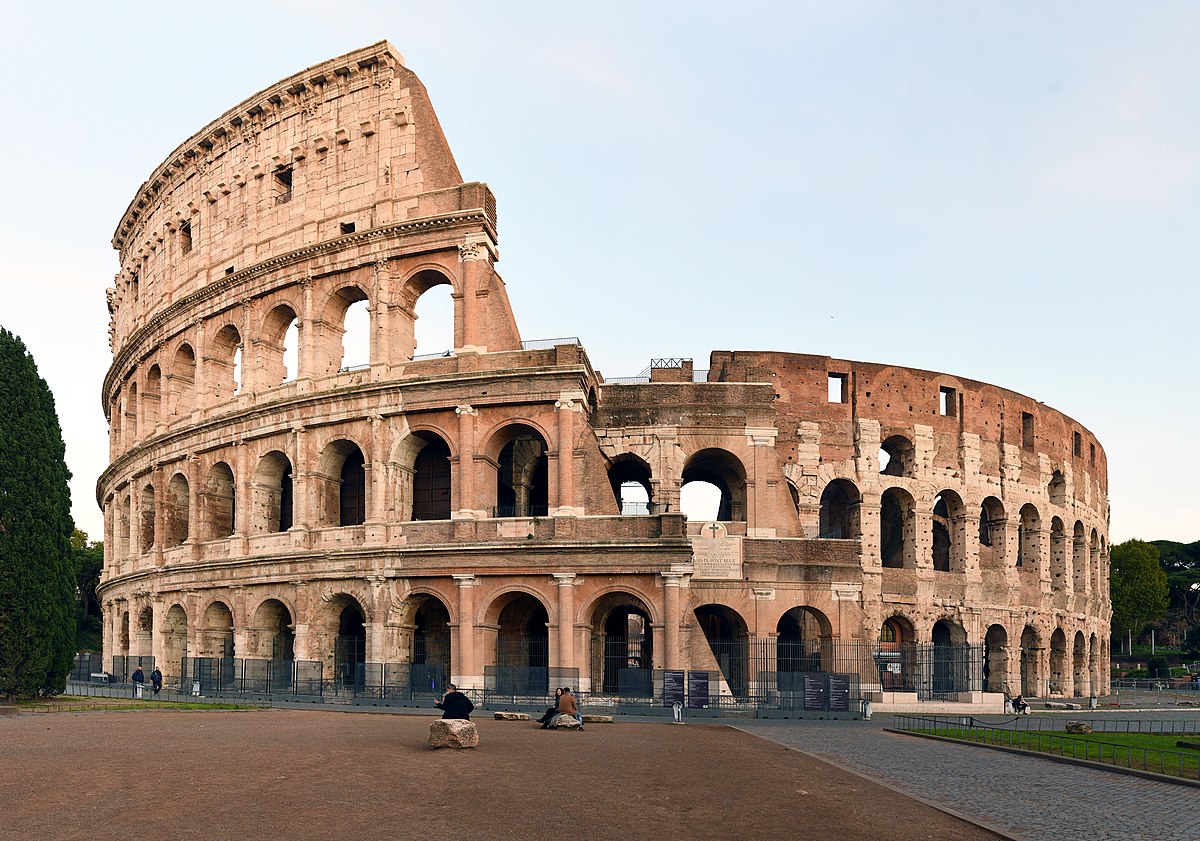A giant stone amphitheater known as The Colosseum or The Flavian Amphitheatre is a massive construction built during the reign of the Flavian emperors as a gift to the Roman people.
Colosseum is the main symbol of Rome and one of the capital’s most remarkable monuments.

Having been constructed over 2,000 years ago, The Colosseum brings you back in time to discover the way of life in the Roman Empire. It is still the largest standing amphitheater in the world, despite its old age.
It is located just east of Palatine Hill, on the grounds of what was Nero’s Golden House. The artificial lake that was the centerpiece of that palace complex was drained, and the Colosseum was sited there, a decision that was as much symbolic as it was practical.
Construction and opening of The Colosseum.
Construction of the Colosseum began sometime between C.E. 70 and 72 under the emperor Vespasian. It opened nearly a decade later and was modified several times in the following years. The massive structure measured approximately 189 by 156 meters (620 by 513 feet), towered four stories high, and included eighty entrances to the amphitheater; seventy-six for the patrons, two for participants of events, and two exclusively for the emperor to use. The sheer number of entrances proved to be necessary: the Colosseum could hold more than 50,000 spectators at its maximum capacity.

Under the Colosseum floor was a tunnel system called the hypogeum, which was built by Emperor Domitian – he also built the topmost tier to add more seating capacity to the structure. The hypogeum consisted of two floors, upon which wild animals, slaves (who worked behind the scenes to bring about the spectacles) and the gladiators were held. There were elevators that brought animals and gladiators onto the arena. There’s also evidence to suggest that there was a hydraulic system.
When the Colosseum first opened, the emperor Titus celebrated with a hundred days of gladiatorial games. Emperors traditionally attended the games. The emperor Commodus is known to have performed in the arena on hundreds of occasions. Aside from the games, the Colosseum also hosted dramas, reenactments, and even public executions.
Read: The Maasai Mara; Kenya’s Epic and Amazing Safari Destination
The Maasai Mara; Kenya’s Epic and Amazing Safari Destination
The Colosseum in Ancient Times.
During the Roman Empire and under the motto of “Bread and Circuses” the Roman Colosseum (known then as Flavian Amphitheatre) allowed more than 50,000 people to enjoy its finest spectacles. The exhibitions of exotic animals, executions of prisoners, recreations of battles, and gladiator fights kept the Roman people entertained for years.

The Colosseum remained active for over 500 years. The last recorded games in history were celebrated in the 6th century.
Since the 6th century, Colosseum has suffered lootings, earthquakes, and even bombings during World War Two. Demonstrating a great survival instinct, the Colosseum was used for decades as a storehouse, church, cemetery, and even a castle for nobility.
The Destruction of the Colosseum.
The Colosseum saw several structural changes throughout history. In 217 AD, a fire destroyed parts of the building, and it was not restored until 240 AD. After the place was abandoned, stones, marble, and iron clamps were looted.
The earthquake in 1349 did the most damage; half of the outer wall collapsed. Until around the 17th century, the rubble was used for other projects in the city – some marbles from the Colosseum were used for Saint Paul Basilica.
Read: For Centuries, a Colossal Wonder
Colosseum in the Present Day.
At present, the Colosseum is, along with Vatican City, Rome’s greatest tourist attraction. Each year 6 million tourists visit it. On 7 July 2007, the Colosseum became one of the Seven Wonders of the Modern World.
From being declared a World Heritage Site by UNESCO to being declared a New Wonder of the World.
Colosseum was declared a World Heritage Site by UNESCO in 1980. Since that time it has undergone extensive renovation and maintenance in order to keep the structure architecturally sound.

On the night of July 7, 2007, in Lisbon, the famous Roman monument was proclaimed with six other great sites on the planet ‘New Wonder’ of the world after a survey sponsored by the Universal Swiss-Canadian filmmaker Bernard Weber, attended by 100 million people of all the continents according to organizers.






